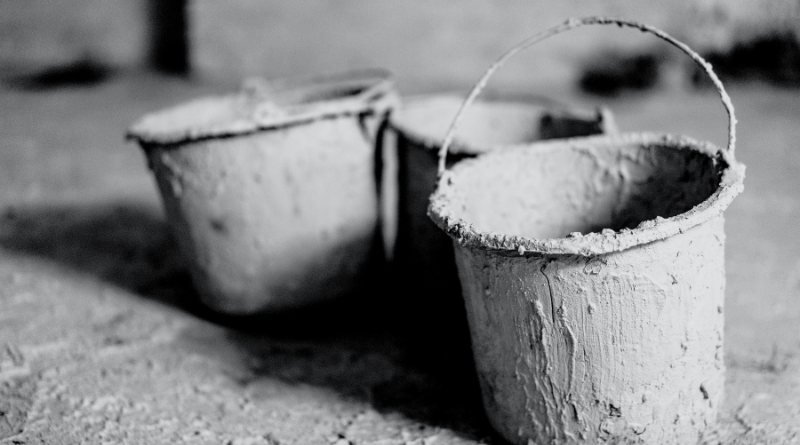
Paint primer, in its essence, is a foundational layer endowed with the divine task of prepping a canvas before the artistic flourish ensues. It’s not just an accessory; it’s the unsung hero that allows the colors to dance with grace and tenacity on the surface, rendering an outcome that epitomizes durability and uniformity.
The lexicon of primers is as multifaceted as it is intriguing. An assortment of these elixirs exists, each tailor-made to serve a specific purpose. These include:
Oil-Based Alchemy: The oil-based primer, akin to a resilient guardian, safeguards porous surfaces like wood and masonry. Yet, it demands a level of mastery in its application and removal, an arduous journey for those uninitiated.
Water-Based Elixir: A more benevolent sibling, the water-based primer is user-friendly, bestowing ease of application and removal. Its compatibility extends to a diverse spectrum of surfaces, spanning drywall, plaster, and metal.
Stain’s Foe – Stain-Blocking Sorcery: The stain-blocking primer emerges as a knight in shining armor, equipped to seal the insidious stains that lurk beneath the surface. It is the sentinel against the agents of ruin, from smoke and nicotine to water’s stealthy infiltration.
Bonding Conjuration: The bonding primer is the maestro of adhesion enhancement. It sets the stage for the paint to perform its mesmerizing act on challenging surfaces, including glass, metal, and plastic.
The Merits of Paint Primer
The utilization of paint primer begets a cascade of benefits, including:
Adhesion Ascension: The alchemical blend of primer and paint fosters an unbreakable bond, birthing a finish with an extended lease on life.
A Uniform Visage: Primer steps in as the artist’s best friend, ironing out the creases and cracks in the surface to gift us with an unblemished canvas.
Stains, Stay at Bay: The stain-blocking prowess of primer is akin to a mythical shield, holding the stains at bay and preventing their ominous resurgence.
Color Alchemy: When the painter’s canvas is an old tapestry, and the task is to paint a lighter shade over a darker one, primer is the magician’s wand that conceals the past.
Guardianship Against Moisture: Primer’s watchful eye extends to moisture. It stands as a bulwark, shielding the surface from the corroding embrace of water.
When Must Paint Primer Be Employed
The strategic use of primer is imperative in various scenarios, but it is indispensable when:
- The voyage involves a transition from a darker hue to a lighter one.
- The destination is a porous surface, be it wood or masonry.
- The journey commences with a stained past.
- The pathway meanders through the labyrinth of glass, metal, or plastic.
- The final destination resides within the realm of moisture’s influence.
Mastering the Alchemical Ritual: How to Apply Paint Primer
For those unearthing the secrets of the alchemical ritual known as “applying paint primer,” consider these time-honored steps:
Prepare the Canvas: The pilgrimage begins with a pristine canvas. Remove the impurities, whether they be dust, dirt, or grease, to unveil a surface that beckons transformation.
The Primer’s Embrace: With finesse, bestow a slender layer of primer upon the canvas. Yet, patience is the watchword here; let the primer dry completely before the paint embarks on its voyage.
For a seamless journey, remember these pearls of wisdom:
- Select the right primer tailored to the surface you intend to adorn.
- Prudence dictates a measured hand in applying the primer. An overzealous approach can birth a churlish outcome, with the paint peeling as an act of defiance.
- Allow the primer to dance in solitude, drying in its own time before the brush rendezvous with the canvas.
A Masterpiece in Primer
In the grand tapestry of painting, paint primer emerges as an indispensable chapter. It breathes life into the mundane surface, fostering durability and uniformity, while acting as a guardian against the agents of decay. When embarking on your artistic quest, remember to summon the enigmatic primer for a symphony of colors and an enduring legacy.
Here, we unbox additional troves of wisdom regarding the mystique of paint primer:
- Before the primer’s grand debut, a vigorous shake is in order.
- Stroke upon stroke, the primer should cloak the canvas in a thin, even coat.
- Overlap the primer’s embrace, ensuring every nook and cranny receives its protective charm.
The patience of the artist is tested once more, as the primer must be allowed to dry completely before the grand finale – the application of paint.
It’s worth noting that while primer’s presence isn’t mandated for surfaces already adorned in their pristine glory, its inclusion is a prudent choice for those weathered, stained, or constructed of obstinate materials.
As stories and fables echo through the annals of time, the transformative powers of paint primer are aplenty. Consider the tale of a homeowner, their living room draped in somber, dark brown hues. In their quest for renewal, they acknowledged the essential role of primer in obfuscating the past. Two coats of primer were applied as a symbol of hope, concealing the old colors and birthing a new narrative. The results, akin to a masterpiece, bore no traces of the past, ensuring the lighter shade of beige could flourish undeterred.



